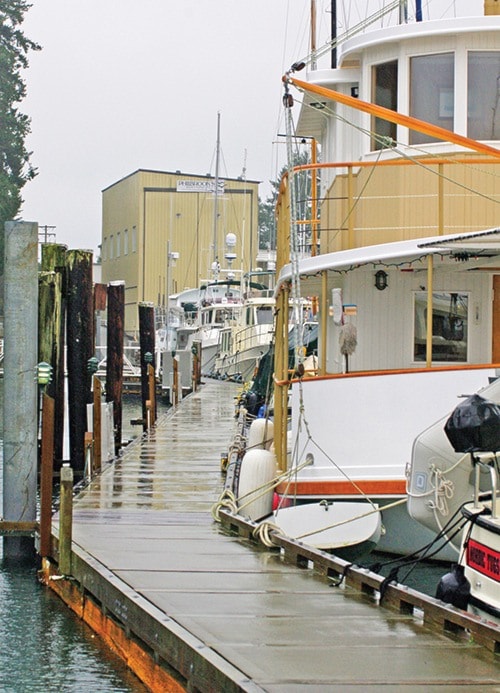The boom and bust path of the B.C. marine industry is experiencing an upswing of late and the industry is looking to maintain a supply of qualified workers.
The federal government’s national shipbuilding procurement plan is causing a resurgence in maritime construction, says Jerome Rodriguez, manager of industry relations with the Industry Training Authority (ITA). The ITA recently held their 10th annual Youth Day conference .
The conference brought together more than 150 career educators, employers and industry representatives to share best practices and to discuss the many benefits of apprenticeship in the trades. Sidney’s Gartside Marine Engines was a panelist during the event.
“The Esquimalt and Vancouver shipyards are busy and interested in reaching youth and younger apprentices to replace workers who are leaving,” he said.
The ITA leads and co-ordinates British Columbia’s skilled trades system. They work with employers, employees, industry, labour, training providers and government to issue credentials, manage apprenticeships, set program standards and increase opportunities in the trades.
In 2014, Rodriguez said there were 700 students registered in trades apprenticeship programs — a significant enrolment in the ITA’s core youth strategy.
On the south Island, Rodrigues said the ITA is linking students with employers like Gartside Marine. On the Saanich Peninsula, that includes working with the Marine Industry program at Parkland Secondary School. Rodriguez said the ITA is passionate about helping youth get the skills and education as early as possible, helping lead many into apprenticeship programs to keep the industry afloat.
Programs such as their Youth Exploring Skills (YES) to industry introductions between Grades 5 and 10, provide information about skill-based activities to encourage students into the trades.
The ITA leads and co-ordinates British Columbia’s skilled trades system. The organization works with employers, employees, industry, labour, training providers and government to issue credentials, manage apprenticeships, set program standards and increase opportunities in the trades.
The ITA has 15 apprenticeship advisors who work with employers across the province. They link with labour groups, First Nations and more to predict how the marine labour market will pan out over five to 10 years.
Rodriguez said B.C. is currently home to 43 per cent of Canada’s shipbuilding and repair capacity — and there will be approximately 4,000 new tradespeople needed over the next decade to replace an aging workforce.
“The industry is experiencing a shift in demographics,” he continued. “And they are potentially seeing 20 to 25 years of experience walking out the door.”
Apprenticeships, he said, help ensure continuity of that workplace knowledge.
As it is their role to encourage that path among students in the trades, Rodriguez said people can check with the ITA to see how apprenticeships work and where they might be available.
Rodriguez encourages people interested in marine trades and other paths, to check their website at itabc.ca.
